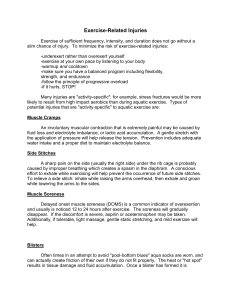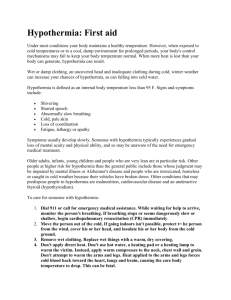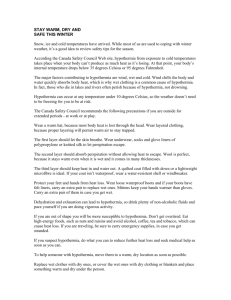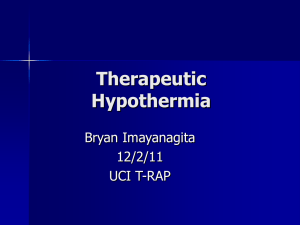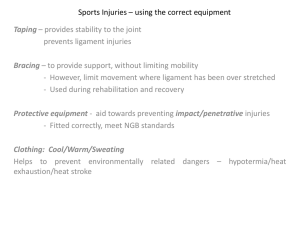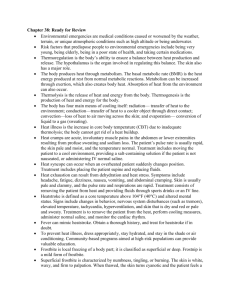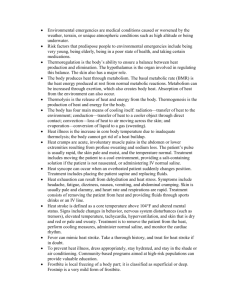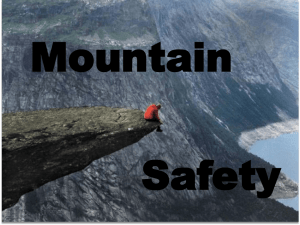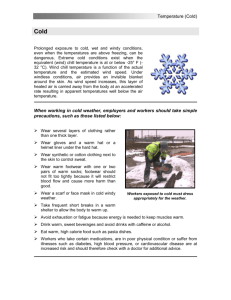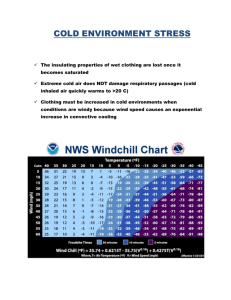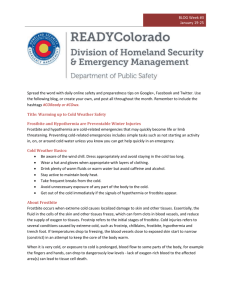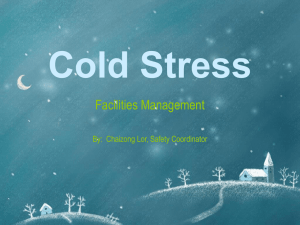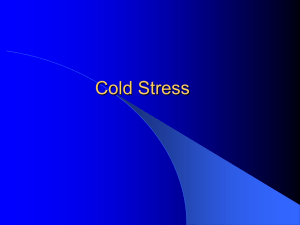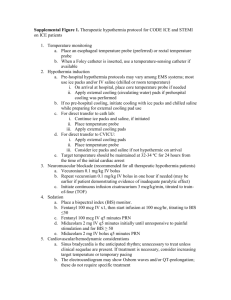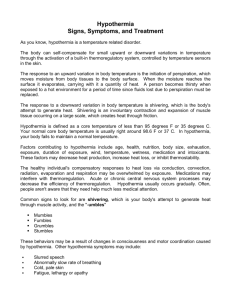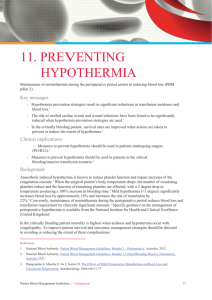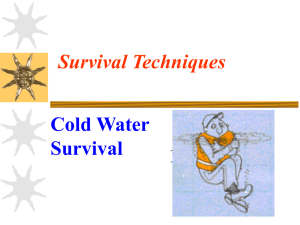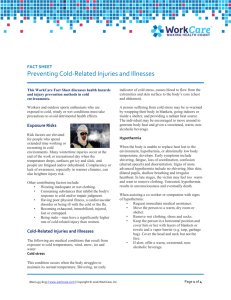Muscle Cramps, Frost bite,
advertisement
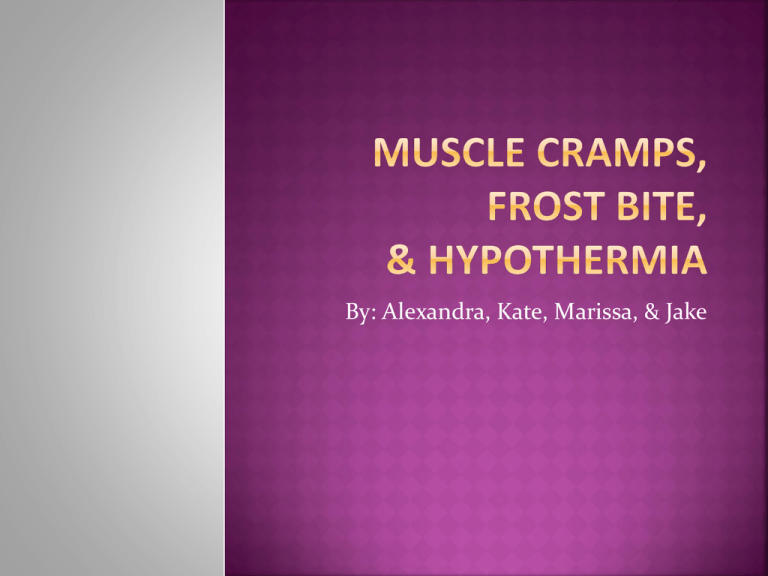
By: Alexandra, Kate, Marissa, & Jake What is a muscle cramp? A muscle cramp is a strong, painful contraction or tightening of a muscle that comes on suddenly and lasts from a few seconds to several minutes. It often occurs in the legs. A muscle cramp is also called a charley horse How to treat it? You may need to try several different ways to stop a muscle cramp before you find what works best for you. Here are some things you can try: - Stretch and massage the muscle -Take a warm shower or bath to relax the muscle. A heating pad placed on the muscle can also help. -Try using an ice or cold pack. Always keep a cloth between your skin and the ice pack. -Take an over-the-counter pain medicine, such as acetaminophen ,Tylenol, ibuprofen, Advil, Motrin, or naproxen, Aleve. Read and follow all instructions on the label. -Drink plenty of fluids. Sports drinks, such as Gatorade, will often help leg cramps. What is frost bite? Frost bite occurs when tissues freeze. This condition happens when you are exposed to temperatures below the freezing point of skin. After initial life threats are excluded, rewarming is the highest priority. This is accomplished rapidly in a water bath heated to 40-42°C (104107.6°F) and continued until the thaw is complete (usually 15-30 minutes). Narcotic pain medications may be given because this process is very painful and aloe helps relieve the pain of frost bite as well. Because dehydration is very common, IV fluids may also be given. Etc….. What is hypothermia? Hypothermia is a potentially dangerous drop in body temperature, usually caused by prolonged exposure to cold temperatures. The risk of cold exposure increases as the winter months arrive. But if you're exposed to cold temperatures on a spring hike or capsized on a summer sail, you can also be at risk of hypothermia. Normal body temperature averages 98.6 degrees. With hypothermia, core temperature drops below 95 degrees. In severe hypothermia, core body temperature drops to 86 degrees or lower. If medical care isn't immediately available: -Remove any wet clothes, hats, gloves, shoes, and socks. -Protect the person against wind, drafts, and further heat loss with warm, dry clothes and blankets. -Move gently to a warm, dry shelter as soon as possible. -Begin rewarming the person with extra clothing. Use warm blankets. Other helpful items for warming are: an electric blanket to the torso area and hot packs and heating pad on the torso, armpits, neck, and groin; however, these can cause burns to the skin. Use your own body heat if nothing else is available. -Take the person's temperature if a thermometer is available. -Offer warm liquids, but avoid alcohol and caffeine, which speed up heat loss. Don't try to give fluids to an unconscious person. ****If the hypothermic person is unconscious, or has no pulse or signs of breathing, call for emergency help right away. CPR (cardiopulmonary resuscitation) should be given immediately. ****Because hypothermia causes the body to shut down in ways that mimic death, CPR should be continued, even in the absence of signs of breathing or a pulse, until paramedics arrive or the person is taken to a hospital.

